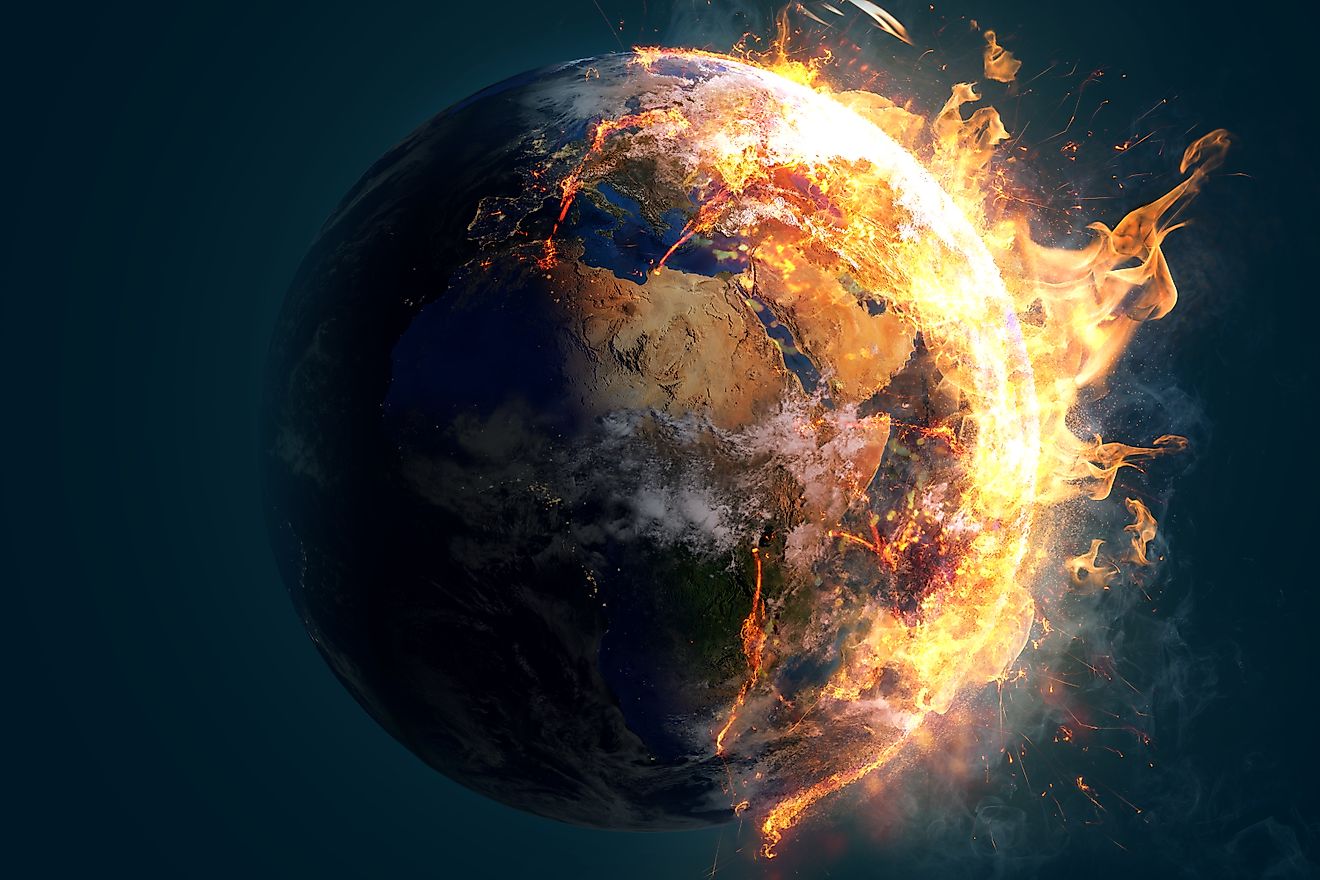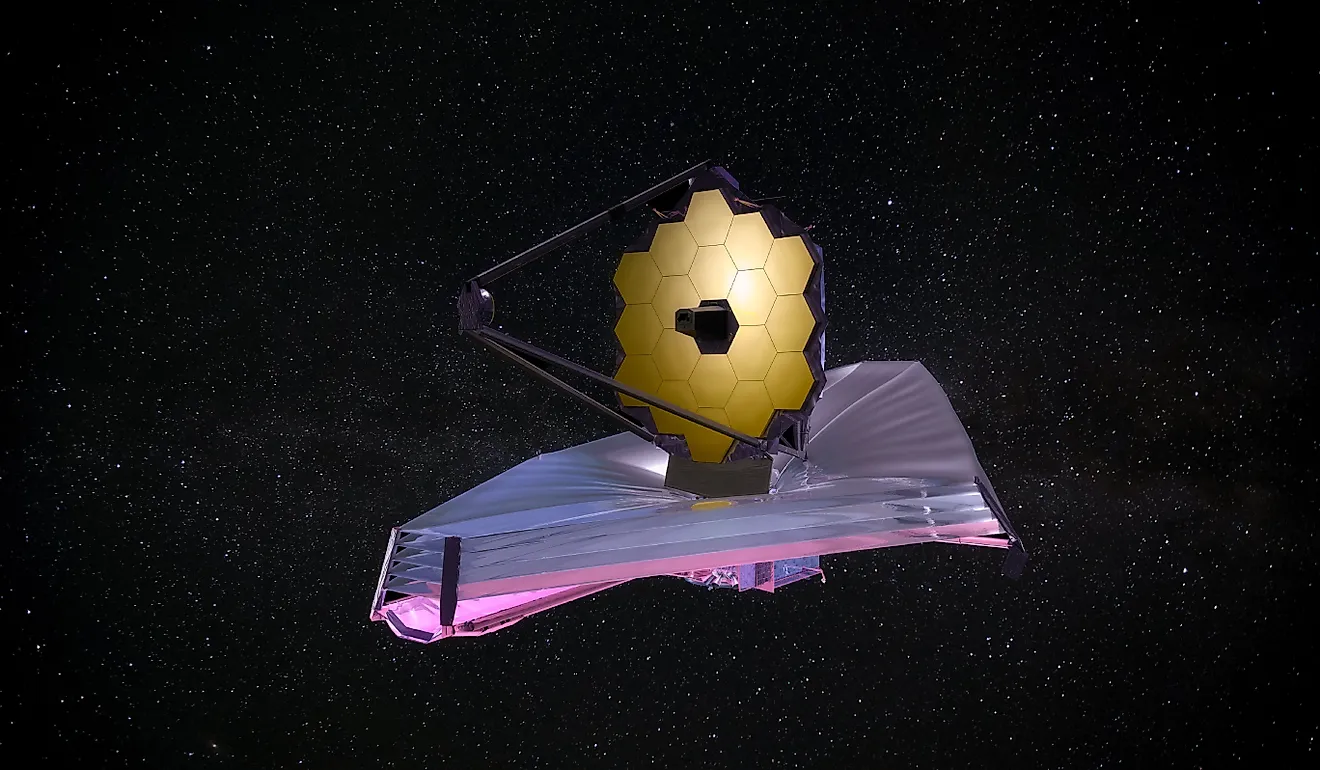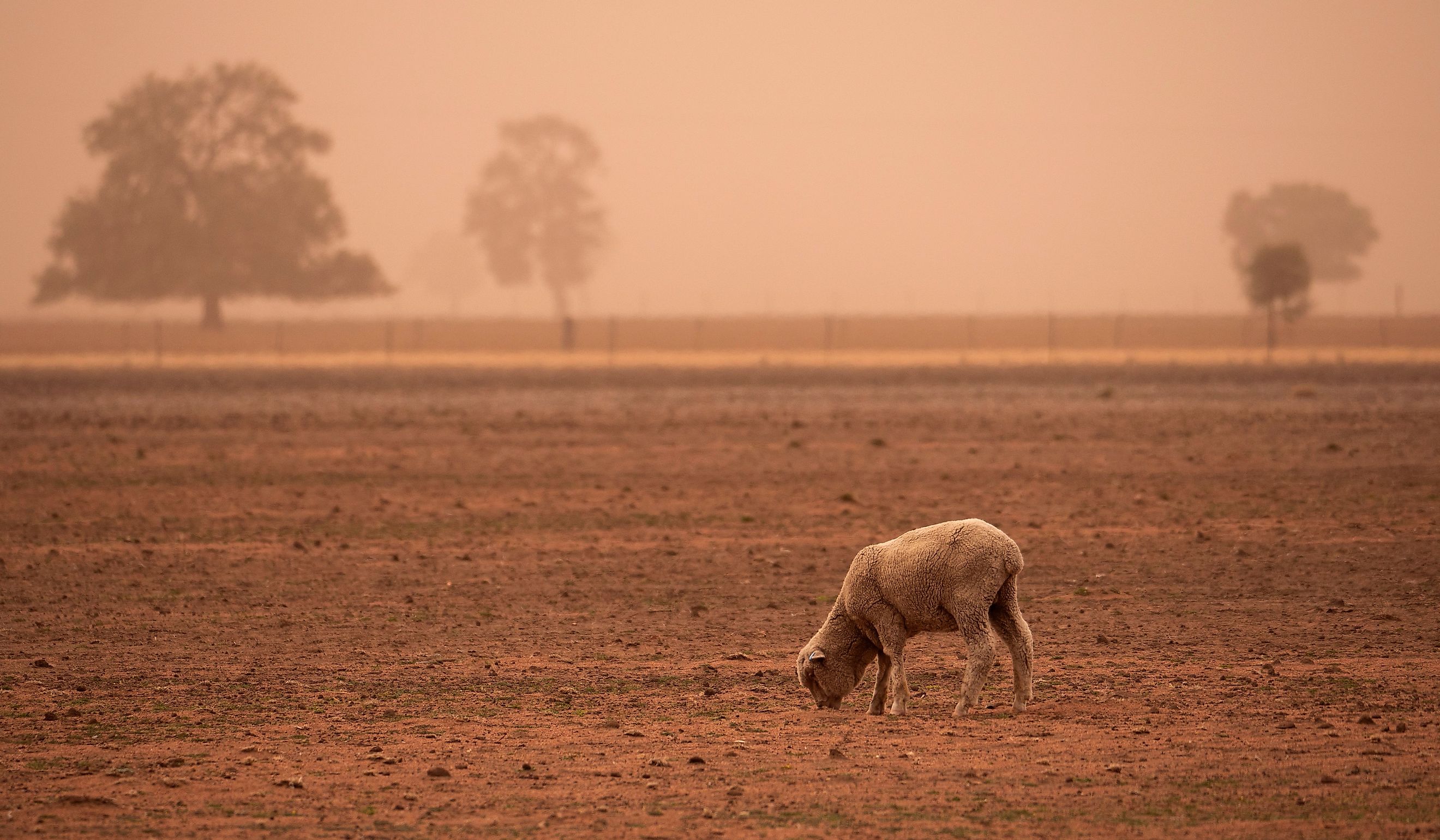
Australia's Struggle for Water Security
Australia's drought and fire risks are both significant and recurring challenges for the country. Both have had harsh impacts on the environment, agriculture, and Australia's water resources.
The country's location and weather patterns often result in insufficient rainfall, particularly during events like El Niño. Their water security is critically linked to these dry spells, and it can impact everything from water supplies in cities to the level of production from its farms.
Between 2017 and 2019, low water levels affected both big cities and small towns, and this showed how dramatically water levels can affect the economy and society as a whole. The costs and health issues were deep, touching not just the economy but also the mental and physical well-being of the country’s people.
This escalating challenge threatens both water security and ecosystems, prompting Australians to devise solutions and strategies in response.
Background on Australian Droughts
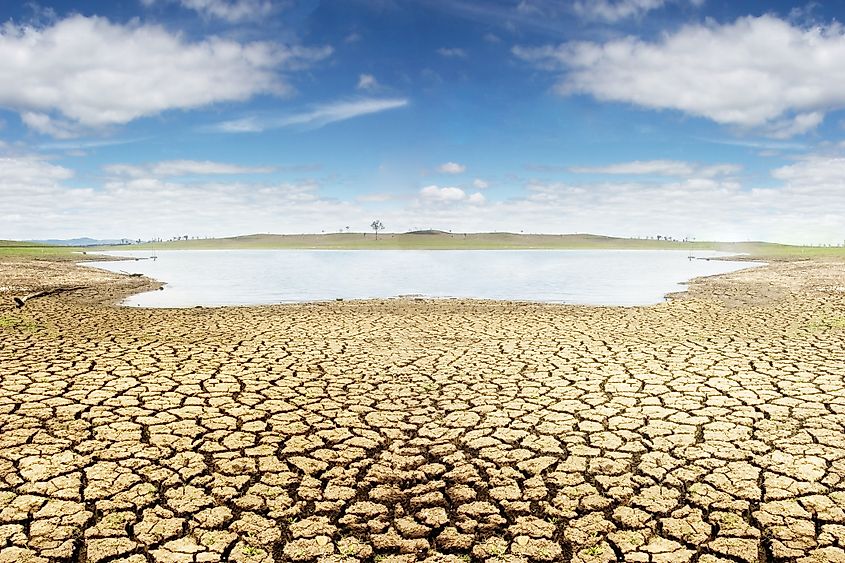
Droughts and Australia are no strangers to each other. The country has been through costly droughts in the past. Some of the more devastating ones include the Federation Drought, back at the turn of the 19th century, which was so severe over 50 million sheep perished. There was also the Millennium Drought, which cost the country around $10 billion.
This country's location and weather patterns often lead to frequent dry spells. It is the driest inhabited continent on earth, with low rainfall and high evaporation rates, and receives 20 inches less rainfall than the worldwide average.
El Niño-Southern Oscillation makes Australia's dry conditions even tougher by reducing rainfall. When this pattern transpires, places in the east and south of Australia see a noticeable drop in rain.
The Australian Bureau of Meteorology says El Niños lead to less rain and, consequently, drought in already afflicted areas. Back in '82 and '83, there was a decrease in water levels across the country. Rain refused to fall, and numerous wildfires emerged, which ended up costing the country billions of dollars.
It is not just El Niño stirring things up climate-wise. The Indian Ocean Dipole and the Southern Annular Mode both disrupt rainfall all over Australia. Weather events like El Niño or the Indian Ocean Dipole make sea temperatures rise. When this happens, it disrupts the normal water cycle, which then leads to less rain.
For example, back in 2019, the Indian Ocean Dipole turned positive, and it ended up being one of the driest years the country has ever seen. That year, Australia saw 40 percent less than its normal rainfall. The mix of these weather changes and the rising worldwide temperature means Australia sees longer and more frequent dry periods.
And it's not like cooler climate is on the horizon. The Australian Bureau of Meteorology reports that in the next six years, the temperature could rise 1.3 to 1.7 degrees Celsius warmer (2.3 to 3.1 degrees Fahrenheit), making a tough situation harder.
Current Drought Situation

Australia recently experienced a major drought hitting its people and landscape, especially in New South Wales (NSW).
The government's Bureau of Meteorology said September 2023 was the driest September on record. On top of that, it was a few degrees hotter for that time of year, causing water to evaporate faster than usual.
This rapid evaporation quickly dries out the ground, and as a result, water storage levels drop significantly, with some places down to over half of their normal capacity.
As is so common with droughts, no matter what country you are in, the farming community suffers. The lack of water caused dire problems for farms, as well as cities' water supply and natural areas thirsty for moisture.
Farming in NSW, which brings in over $12 billion for the state, is under a lot of stress. Farmers are seeing lower crop yields and losing animals. This tough situation highlights how crucial it is to manage water resources and develop strong plans to tackle prolonged drought.
The Australian Bureau of Agricultural and Resource Economics and Sciences has published studies showing how dry weather affects farming in NSW. Farmers have faced losses in crop production and livestock due to water shortages. Do you know what made it even worse? The unpredictable climate variability and extreme weather events.
In response, Australians are trying ways to save water, using tech to help solve the problem. Some new watering systems can even cut water use in half, but the challenge of ensuring water security persists.
Impact on Water Security
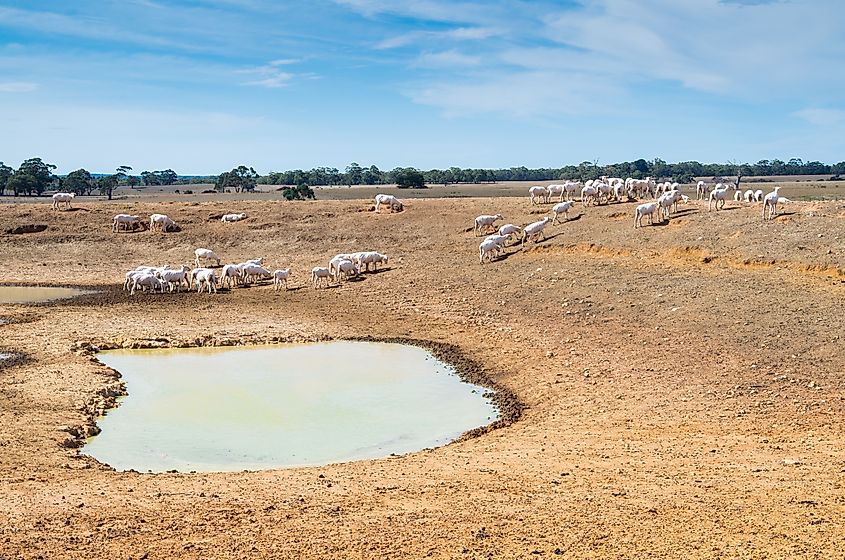
With Australia experiencing drought-like conditions, there is a lot of pressure on its water supply. Levels are dropping with the lack of rain, and the heat keeps on rising.
Australia is an interesting case because of its unique challenges. Take the diverse conditions across the country, for example, where some regions face high dam levels and potential flooding while others struggle with significant rainfall deficits. These disparities highlight the ongoing need for solutions and effective policies to manage water resources sustainably and equitably.
The Climate Council, an independent, community-funded organization in Australia providing information and advocacy on climate change issues, says the situation has prompted investments in new methods. For instance, different groups have started using technology to help make ocean water drinkable at these huge setups called desalination plants, treating water so it can be reused safely.
According to R.L. Heathcote, in the article "Drought Mitigation in Australia: Reducing The Losses But Not Removing the Hazard," technology can help, but it can also adversely affect the situation. Back in the 80s, he says, soil erosion problems, commonly linked to drought, were also a product of mismanagement of the technology being used. So, technology can help, but the management of tech is just as important.
Now, farming depends on having plenty of water to keep things growing right and animals healthy. When it is dry and hot, it hurts how much water is available for growing crops or grass for animals. The government in Australia saw that in the dry times of 2018-2019 and 2019-2020, farmers experienced huge financial difficulties.
They faced significant losses amounting to billions due to the tough conditions they were put through. The cost does not end with farmers. Food prices shot up, climbing by about 10 percent. That puts extra strain on everyone trying to fill their grocery carts.
The web of problems that come from drought and lower water levels is a complicated one.
Country towns get the short end of the stick as well since they often have no choice but to bring in truckloads of pricey water from far away places every day, and that adds up quickly. In spots like Stanthorpe, they were paying out close to $800,000 monthly. The long-term picture is pretty daunting because that sort of cost simply is not feasible with many smaller communities.
Then, there are health issues that come with drought. For example, drought leads to health problems like heat exhaustion and waterborne illnesses. Also, droughts can attributed to respiratory illnesses, something the World Health Organization has warned about happening in communities across the world.
Relation to Wildfires
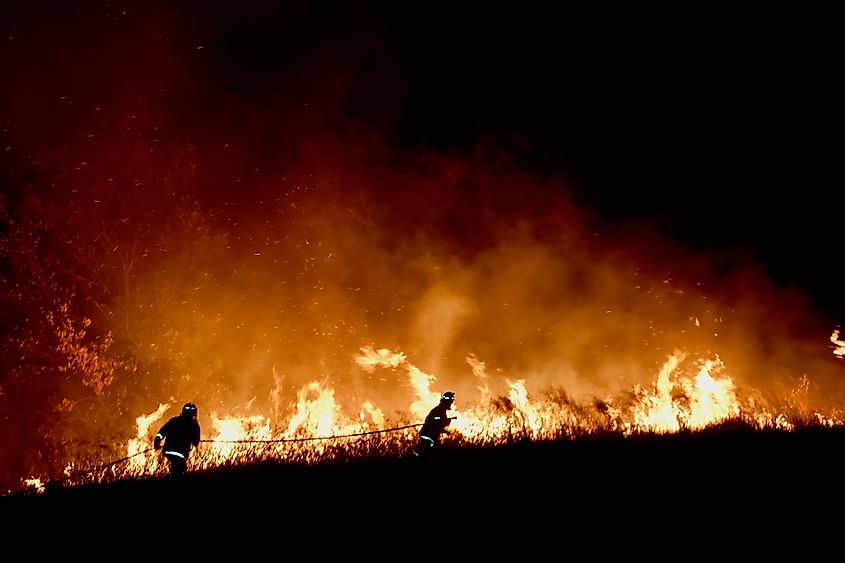
Drought and wildfires in Australia are closely connected. When dry conditions linger, the land turns bone dry, especially plants and shrubs. This creates an environment where fires can ignite easily and spread rapidly, leading to intense and destructive blazes.
Take the huge bushfires in 2019-2020. Often referred to as the "Black Summer," these fires were severe due to the extremely dry conditions at the time. Statistics from the Australian Government Bureau of Meteorology say the resulting fires burned across 18 million hectares. Over 3,500 houses were destroyed, and 33 people died.
Included in the Implications for Australia report, printed by the Australian Strategic Policy Institute, the dry conditions led to previously unseen bushfires in terms of raw size and power.
In late 2018, Queensland faced a severe drought, creating a unique situation of rebuilding from floods during a drought. Only a short time before the drought, Australia had been hit with floods that caused widespread damage. This juxtaposition of extreme weather events highlights the severe impact of climate change on Australia's environment.
Less than a month later, the drought worsened, sparking over 140 bushfires. An extreme heatwave with record-breaking November temperatures in the 40's °C (over 100 °F) followed. For the first time, parts of Queensland faced 'catastrophic' bushfire conditions. Over a million hectares of bush and farmland were destroyed, the largest area affected on record in Australia.
The animals and forests were hit hard by the sweeping fires, ripping through the bone-dry land. Even though lots of plants and animals are adapted to fire conditions, the unprecedented scale and intensity of the fires pushed many species toward extinction. A mind-boggling number of animals, almost 3 billion died or were harmed in the fires, according to the World Wildfire Fund.
For instance, think about koalas: the International Fund for Animal Welfare thinks around 60,000 were hurt or died in those fires. To put that into context, as of 2024, the assumed population of the koala is thought to be between 95,000 and 238,000 animals. Also, other species, like brush-tailed rock wallabies, need certain types of woods to live in; they also lose much of their habitat because of the flames.
Fires can have long-lasting effects on nature, leading to issues such as soil erosion, water pollution from ash, and a decrease in plant and animal diversity. Fires significantly increase soil erosion, negatively impacting water quality. The aftermath can take years for affected areas to heal, and some changes may be irreversible.
Fighting Back and Going Forward
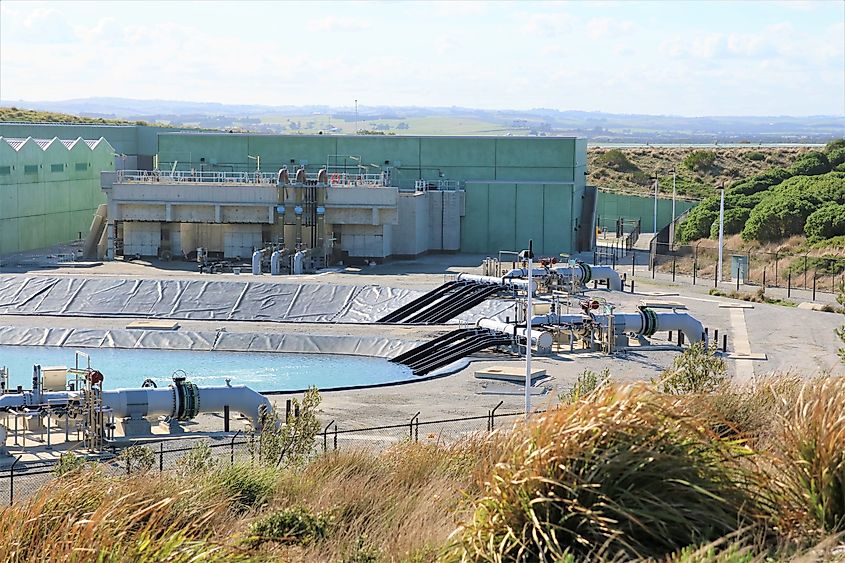
Australia is working tirelessly to solve its water shortage problems by using new tech and clever ideas to beat drought. They are diving into desalination to turn seawater into drinking water, recycling used water, and improving how they water crops with high-tech irrigation methods.
Desalination has become important in places like Sydney and Perth. There, desalination plants are helping by making sure people have enough water, even when rainfall dries up. These plants are crucial for ensuring urban water security during extended periods of drought. According to Sydney Water, these smart setups give Sydney a fifth of its drinking water. For Perth, desalination is even more significant, supplying almost half of the city's water needs from its two major desalination plants.
Australia is also pushing towards giving used water a second chance at life. They are using advanced treatment processes to safely reuse wastewater for irrigation, industrial processes, and even potable water. For example, the Western Corridor Recycled Water Scheme in Queensland can whip up 232 million liters daily just for industry needs.
Meanwhile, savvy sprinkler tech is making every drop count for farmers by using tech that knows exactly when and where plants need a drink. Smart sprinkler systems are clever devices that use special sensors and data to know just the right time and place to water plants. This way, they give water when it is really needed, helping to save water and keeping crops in tip-top shape. This leads to less waste and healthy, watered veggies, even during dry spells. Some systems using this system can cut down water use by as much as 60 percent.
Research and development efforts are busy cooking up crop varieties that are much more tolerant to drought conditions. The Commonwealth Scientific and Industrial Research Organization (CSIO) says tough new grains can be sown deeper to access more moisture, showing an average yield benefit of 18 to 20 percent compared to conventional methods.
Water Security Against Drought
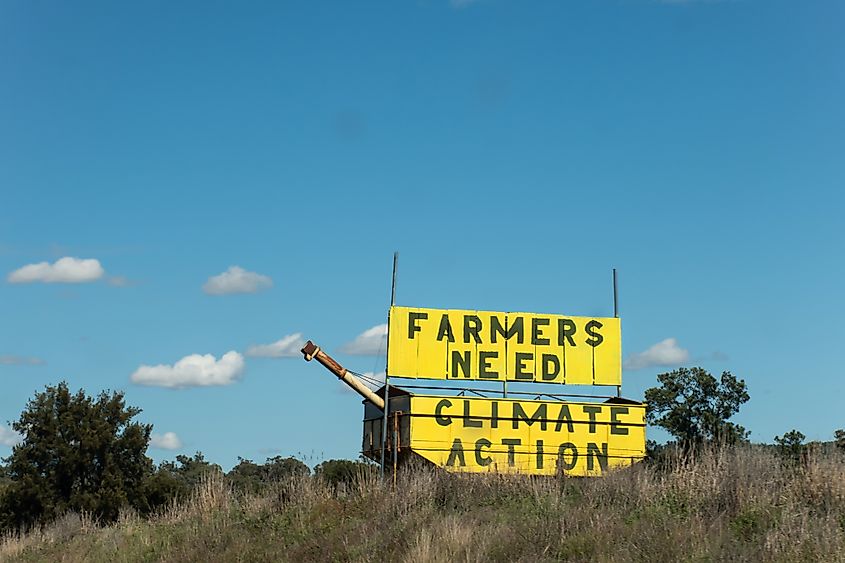
Australia's got a tough job on its hands when it comes to keeping its water supply steady. Lately, we have seen a rise in droughts, making it tough to ensure everyone has enough water, especially in the dry southern areas.
Weather and climate have been unpredictable, with a lot of fingers pointing towards climate change. Dry spells are hanging around longer than they used to. What this means is there might be a lot less water to go around for farms, cities, and all the creatures out there in nature.
According to the World Business Council for Sustainable Development, the economic impact of water scarcity is also profound, with water shortages estimated to cost the global economy over $323 billion annually. Fields like farming and manufacturing, which rely on water security, could face big problems. The Australian Bureau of Statistics says that Australia’s population will reach 30 million by 2030, which it currently sits at just over 26 million.
This will likely worsen the stress on water resources, increasing demand for already limited water supplies. In Graeme Stemp-Morlock's article "Natural Resources. Australia's War on Drought," he quotes a CSIO report that says people continue to move to the southeast portions of Australia. If the demand keeps growing like it is, the biggest cities will need up to 40 percent more water, which they do not have.
As we peek into the future, weather forecasts and people patterns are showing us a bit of a tough road ahead. Cities are growing, wallets are changing, and everyone needs more water. Luckily, Australians are proving to be both adaptable and innovative in solving their water security problems.
Australia is facing intense dry spells that are tough on the land, farms, and water supplies.
Natural elements like El Niño other weather patterns can worsen drought conditions. The world faces some tough environmental puzzles, and the battle between dry spells and big fires adds to these troubles. We saw how serious this can be during the Black Summer. Nature showed us just how linked droughts, water security, and wildfires are.
Down in Australia, they are getting inventive to deal with their water woes. In cities like Sydney and Perth, desalination plants can supply water when it gets too dry. And on farms, clever watering setups keep things growing even when rain levels drop.
As we look to the future, issues like climate change and population are going to make water even scarcer. Australia is doing important work by developing new technologies and creating policies to help lessen the effects of drought and make sure there is enough water for the future.
By following these steps, the country plans to keep its water safe, help farms keep going strong, and look after its unique environment, even as the weather changes in new ways.
Works Cited
“Australia’s 2023 in Weather: A Year of Warm Temperatures and Contrasting Rainfall - Social Media Blog - Bureau of Meteorology.” Media.bom.gov.au, media.bom.gov.au/social/blog/2861/australias-2023-in-weather-a-year-of-warm-temperatures-and-contrasting-rainfall/.
Australian Bureau of Statistics. “Population Projections, Australia.” Www.abs.gov.au, 23 Nov. 2023, www.abs.gov.au/statistics/people/population/population-projections-australia/latest-release.
Australian Bureau of statistics. “Water Account, Australia, 2017-18 | Australian Bureau of Statistics.” Www.abs.gov.au, Australian Bureau of statistics, 19 Oct. 2023, www.abs.gov.au/statistics/environment/environmental-management/water-account-australia/latest-release.
Australian Museum. “Impacts of Climate Change.” The Australian Museum, The Australian Museum, 2021, australian.museum/learn/climate-change/climate-change-impacts/.
Bergkamp, Ger. “Desalination - the Australian Experience.” International Water Association, 2016, iwa-network.org/news/desalination-australian-experience/.
“Black Summer.” Australian Public Service Commission, 17 July 2023, www.apsc.gov.au/state-service/state-service-report-2019-20/chapter-1-commitment-service/black-summer#:~:text=Before%20summer.
CSIRO. "Drought-Tolerant Wheat Varieties." CSIRO, 2023, www.csiro.au/en/about/challenges-missions/Drought-Resilience/Mission-progress/Long-coleoptile-wheat.
Department of Climate Change, Energy, the Environment and Water. "National Koala Monitoring Program." DCCEEW, 2024, www.dcceew.gov.au/environment/biodiversity/threatened/species/koalas/national-koala-monitoring-program.
“Drought - DAFF.” Agriculture.gov.au, 2022, www.agriculture.gov.au/abares/research-topics/climate/drought.
“Drought Locations | Current & Historical - Student Center | Britannica.com.” Student Center, www.britannica.com/study/drought-locations-current-historical.
“Expert Commentary: 2023/24 El Niño for Australia.” CSIRO, 20 Sept. 2023, www.csiro.au/en/news/all/news/2023/september/expert-commentary-el-nino.
Glasser, Robert. “Implications for Australia.” Preparing for the Era of Disasters, Australian Strategic Policy Institute, 2019, pp. 12-15. JSTOR, https://www.jstor.org/stable/resrep23057.6.
Heathcote, R. L. “Drought Mitigation in Australia: Reducing the Losses but Not Removing the Hazard.” Great Plains Quarterly, vol. 6, no. 3, 1986, pp. 225-37. JSTOR, https://www.jstor.org/stable/23530717.
Hugo, Graeme, and Janet Wall. “Climate Change and Environmental Influences on Australia’s Population Distribution.” Health of People, Places and Planet: Reflections Based on Tony McMichael’s Four Decades of Contribution to Epidemiological Understanding, edited by Colin D. Butler et al., ANU Press, 2015, pp. 177-96. JSTOR, https://www.jstor.org/stable/j.ctt1729vxt.25.
Hughes, Neal, et al. “The Effects of Drought and Climate Variability on Australian Farms - Department of Agriculture.” Agriculture.gov.au, 2021, www.agriculture.gov.au/abares/products/insights/effects-of-drought-and-climate-variability-on-Australian-farms.
Macintyre, S. A Concise History of Australia. 5th ed., Cambridge University Press, 2020.
“Major Disasters and Severe Weather Caused over $21 Billion in Crop Losses in 2023.” American Farm Bureau Federation, www.fb.org/market-intel/major-disasters-and-severe-weather-caused-over-21-billion-in-crop-losses-in-2023.
“Media Releases - Bureau of Meteorology Newsroom.” Media.bom.gov.au, media.bom.gov.au/releases/1183/the-bureau-declares-el-nino-and-positive-indian-ocean-dipole-events/#:~:text=The%20Bureau%20declares%20El%20Nino%20and%20positive%20Indian%20Ocean%20Dipole%20events.
Mishra, Binaya, et al. “Water Security in a Changing Environment: Concept, Challenges and Solutions.” Water, vol. 13, no. 4, 14 Feb. 2021, p. 490, https://doi.org/10.3390/w13040490.
“NSW State Seasonal Update - September 2023.” Www.dpi.nsw.gov.au, 2023, www.dpi.nsw.gov.au/climate-landing/ssu/nsw-state-seasonal-update-september-2023.
“Outlook for Crops - DAFF.” Agriculture.gov.au, www.agriculture.gov.au/abares/research-topics/agricultural-outlook/outlook-crops.
Pandey, Bhupendra K., et al. "Agricultural Land Degradation: Processes and Problems Undermining Future Food Security." Food Security and Land Use Change under Conditions of Climatic Variability: A Multiscale Modeling Approach, edited by Congbin Fu, et al., Springer, 2021, pp. 17-38. SpringerLink, https://link.springer.com/chapter/10.1007/978-3-030-49732-3_2.
“Reservoir Levels | South West Water.” Www.southwestwater.co.uk, www.southwestwater.co.uk/environment/water-resources/reservoir-levels.
Schubert, Siegfried D., et al. “Global Meteorological Drought: A Synthesis of Current Understanding with a Focus on SST Drivers of Precipitation Deficits.” Journal of Climate, vol. 29, no. 11, 2016, pp. 3989-4019. JSTOR, https://www.jstor.org/stable/26385491.
“Smart Irrigation Technology Covers ‘More Crop per Drop.’” MIT News | Massachusetts Institute of Technology, 25 Oct. 2023, news.mit.edu/2023/gear-lab-creates-affordable-user-driven-smart-irrigation-controller-1025.
Steffen, Will. “Deluge & Drought: Water Security in a Changing Climate - Climate Council.” Climate Council, 2010, www.climatecouncil.org.au/resources/water-security-report/.
Stemp-Morlock, Graeme. “Natural Resources. Australia’s War on Drought.” Environmental Health Perspectives, vol. 115, no. 7, 2007, pp. A348-A348. JSTOR, https://www.jstor.org/stable/4619487.
Sydney Desalination Plant. “How Desalination Works - Sydney Desalination Plant.” Sydney Desalination Plant, 2024, sydneydesal.com.au/education/how-desalination-works/.
Western Corridor Recycled Water Scheme Recycled Water Management Plan Annual Report 2020-21.
“Western Corridor Recycled Water Project - Australia - Water Technology.” Www.water-Technology.net, www.water-technology.net/projects/western-corridor/.
World Business Council for Sustainable Development (WBCSD). CEO Guide to Water: Building Resilient Business. March 2018, docs.wbcsd.org/2018/03/CEO_Guide_to_Water.pdf.






